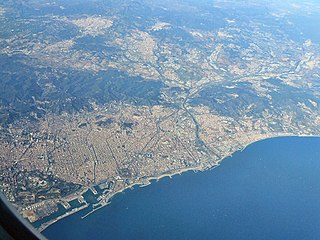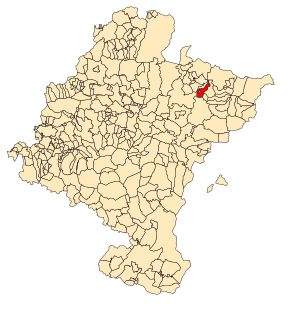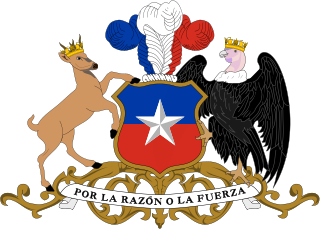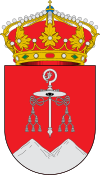
A municipality is usually a single administrative division having corporate status and powers of self-government or jurisdiction as granted by national and regional laws to which it is subordinate. It is to be distinguished (usually) from the county, which may encompass rural territory or numerous small communities such as towns, villages and hamlets.
Córdoba most commonly refers to:

Mallorca, or Majorca, is the largest island in the Balearic Islands, which are part of Spain and located in the Mediterranean. The native language, as on the rest of the Balearic Islands, is Catalan, which is co-official with Spanish.

Girona is a province of Spain, in the northeastern part of the autonomous community of Catalonia. It is bordered on the northwest by the province of Lleida, on the southwest by the province of Barcelona, on the north by France, and on the east by the Mediterranean Sea.

Barcelona is a province of eastern Spain, in the center of the autonomous community of Catalonia. The province is bordered by the provinces of Tarragona, Lleida, and Girona, and by the Mediterranean Sea. Its area is 7,726 km2 (2,983 sq mi). 5,609,350 people live in the province, of whom about 30% (1,620,343) live within the administrative limits of the city of Barcelona, which itself is contained in the Barcelona metropolitan area.
The municipalities of Puerto Rico number seventy-eight incorporated towns and cities. Each municipality is led by a mayor and divided into barrios, though the latter are not vested with any political authority. Every municipality is governed by the Autonomous Municipalities Act of 1991 which establishes that every municipality must have a strong mayor with a municipal legislature. Furthermore, each legislature must be unicameral with its number of members varying according to the municipality's population. And, in contrast to other jurisdictions, both the mayors and the municipal legislators are elected on the same date for the same period of time.

Spain and its autonomous communities are divided into fifty provinces. Spain's provincial system was recognized in its 1978 constitution but its origin dates back to 1833. Ceuta, Melilla and the Plazas de soberanía are not part of any provinces.

Guantánamo is a municipality and city in southeast Cuba and capital of Guantánamo Province.

Here is a list of the administrative comarcas (counties) in the autonomous community of Aragon in Spain. They were officially delimited in 1999, with substantial changes over a previously proposed division.
Mexico City as a territorial and administrative unit is, alongside the 31 states of Mexico, one of the 32 federal entities of which Mexico consists. This entity was until 2016, the “Federal District”, but since then the entity has simply been known as “Mexico City”.
Municipalities are the second-level administrative divisions of Mexico, where the first-level administrative division is the state. As of the establishment of two new municipalities in Chiapas in September 2017, there are 2,448 municipalities in Mexico, not including the 16 delegaciones of Mexico City. The internal political organization and their responsibilities are outlined in the 115th article of the 1917 Constitution and detailed in the constitutions of the states to which they belong.

Abaurregaina/Abaurrea Alta is a municipality and inhabited locality situated in the province and autonomous community of Navarre, northern Spain. It is situated some 70 km from the provincial capital, Pamplona. As of 2005 INE figures, the municipality had a population of c. 150 inhabitants.

A commune is the smallest administrative subdivision in Chile. It may contain cities, towns, villages, hamlets as well as rural areas. In highly populated areas, such as Santiago, Valparaíso and Concepción, a conurbation may be broken into several communes. In sparsely populated areas, conversely, a commune may cover a substantial rural area together with several settled areas which could range from hamlets to towns or cities.

The municipalities of Spain are the basic level of Spanish local government.

Puerto Acosta Municipality is the first municipal section of the Eliodoro Camacho Province in the La Paz Department in Bolivia. Its seat is Puerto Acosta. At the time of census 2001 the municipality had a population of 27,296, still including Umanata and Escoma as cantons.

Aceituna is a municipality in the province of Cáceres and autonomous community of Extremadura, Spain. The municipality covers an area of 620 square kilometres (240 sq mi) and as of 2011 had a population of 620 people.

Ahigal is a municipality in the province of Cáceres and autonomous community of Extremadura, Spain. The municipality covers an area of 52.07 square kilometres (20.10 sq mi) and as of 2011 had a population of 1435 people.
















